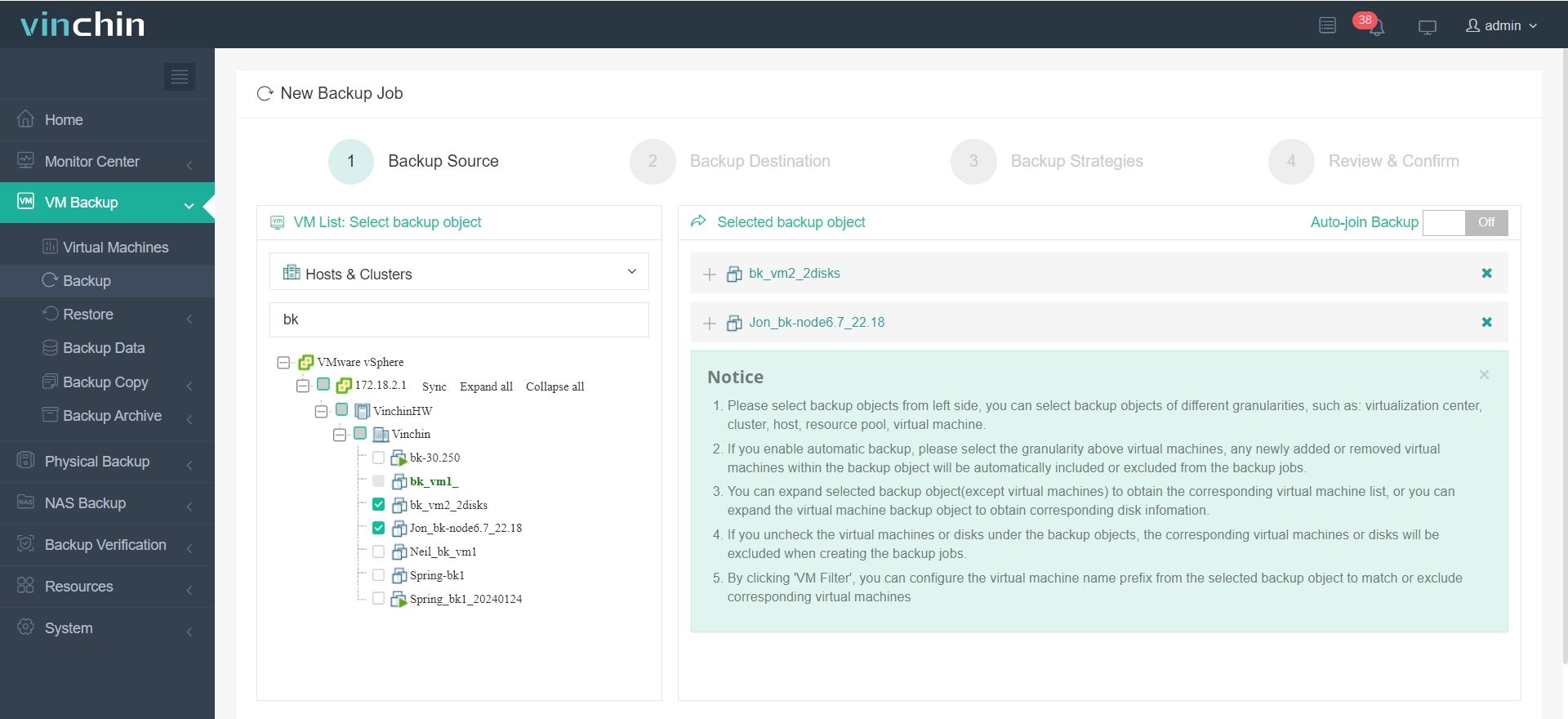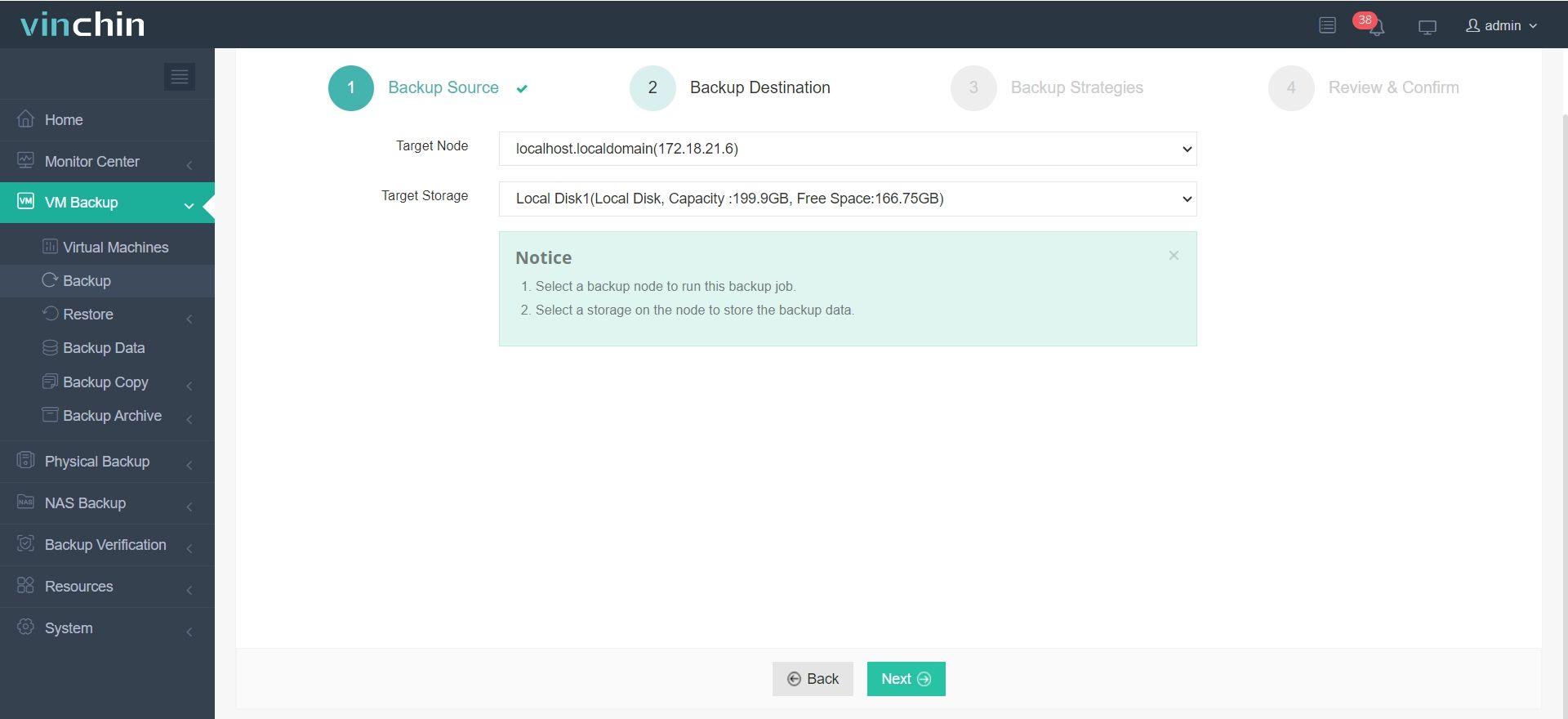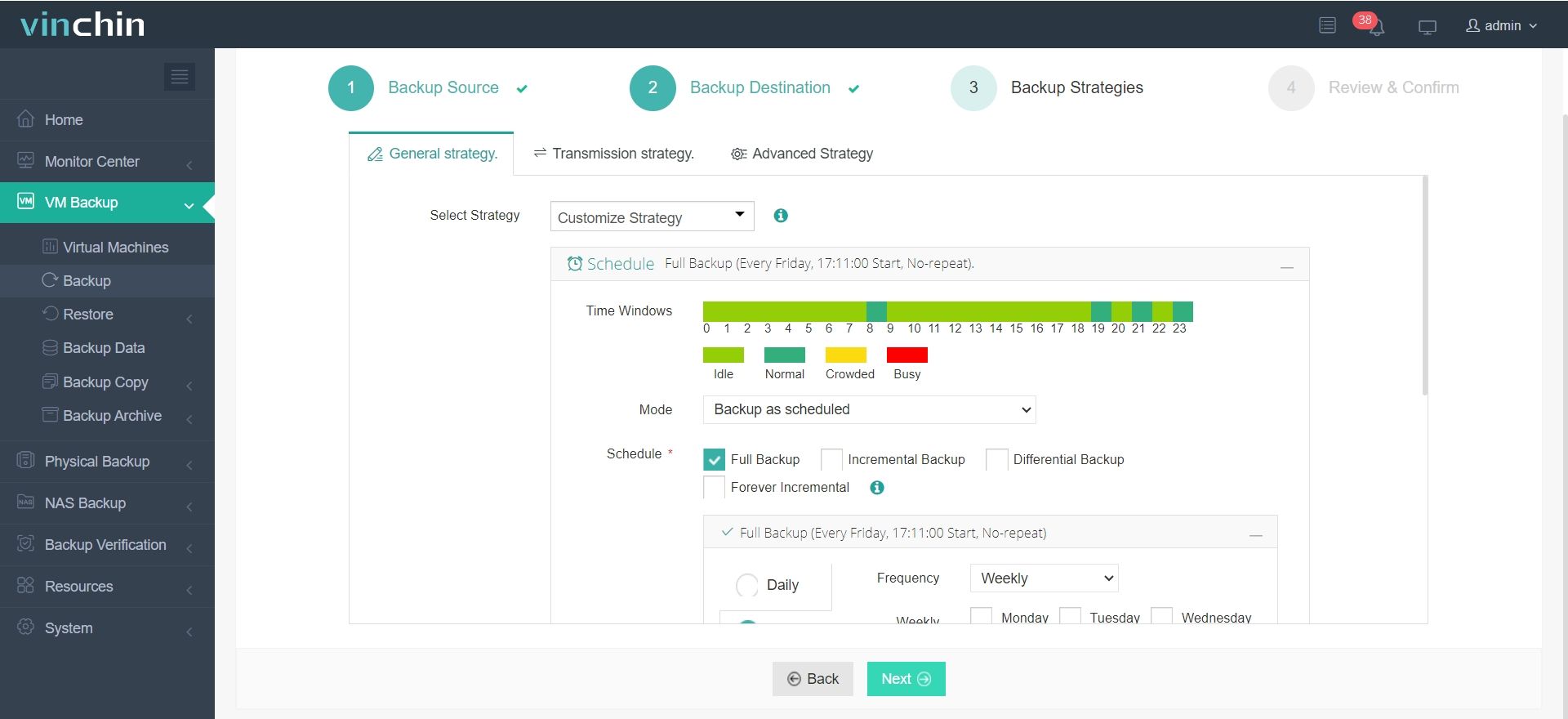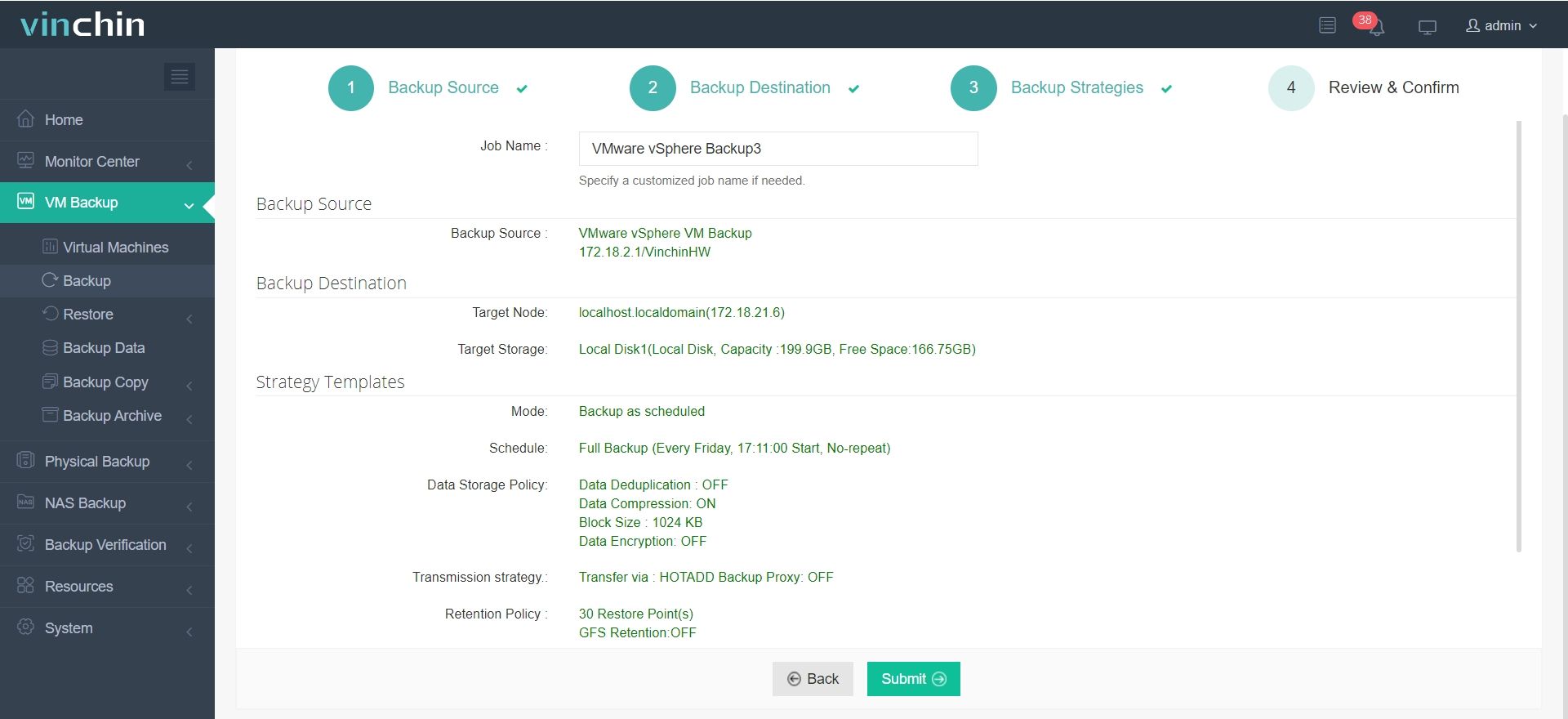-
What is data center?
-
Why you backup data center?
-
How to backup data center?
-
Vinchin makes data center backup simple
-
Data Center Backup FAQs
-
Sum Up
In the digital age, companies and organizations can hardly run without data centers because they provide all kinds of business systems and store the needed data in the cloud.
If you own or manage a data center, while enjoying the convenience and fortune it brings, you should never ignore the importance of data security and business continuity. In other words, you should make a data center backup plan, saving and archiving data for accidents.
To make an exhaustive plan, you should know what to backup first.
What is data center?
In the early time, companies have server rooms to place servers for building websites and other systems. Then, managing server rooms becomes a headache for small businesses because it takes a lot of budgets to hire experts, rent rooms, and procure related facilities. Finally, many companies choose to host the servers in the providers’ server rooms, namely, the later data centers.
Generally speaking, data center is a huge server rooms, where a lot of servers are placed to provide compute power and storage.
Compared with the companies’ server room, data center can provide more powerful compute power and is maintained by experienced experts. Owing to the invention of virtualization technology, the compute power of physical server is fully released and also the expense is decreased so that companies can get better services while paying less money.
To make data center backup plan, you should know the components of data center.
Generally speaking, data center is composed of the main facilities like servers, datastore, switches, routers, etc., and other facilities like the cooling system, backup power, UPS, monitor system, etc. If you would like to backup data in data center, you should focus on the servers and datastore.
Data center often refers to the huge server room providing services like Microsoft Azure and Amazon S3 to other companies but it still can refer to the server room of a company. Anyway, it can be regarded as a small data center.
Why you backup data center?
As mentioned before, no matter the data centers of giants or the server rooms of companies, they are all used to providing continuous service to end users. If the connection broken, the service will become offline. That’s not wanted by anyone. So why data backup is so important for data center?
Preventing data loss: Both individuals and companies know the importance of data security because data loss has caused the bankruptcy of so many companies. Facing the computing system, no one can avoid data loss but data backup can always be the insurance for that.
Defend against ransomware: As industries rely more and more on information systems, some developers developed ransomware for commercial purposes. Apart from the expensive ransomware protection systems, immutable data backup solution is also an effective solution for defending against ransomware. Data backup will be protected from being infected and business systems can be recovered after the environment is cleaned up.
Disaster Recovery: As the clients might need to access the systems at any time, service providers should restore the connection as soon as possible in the event of downtime to ensure business continuity. Data backup is important during the process because the popular solution is restarting the failed virtual machine from data backup on a new host.
How to backup data center?
From the above content, you might have known that what you need to backup in data center are servers and datastore. There are some strategies for backup and disaster recovery:
Basically, you should know the common backup types, full backup, incremental backup, and differential backup.
Full Backup: Full backup is a complete copy of all data files in a system or application at a specific point in time. Here it means you should make a full backup of server or datastore so that you can restore all the data or retrieve the files from it.
Incremental Backup: Incremental backup is created based on the last backup which saves only the changed data since the last backup. Also, the later restoring process can not be completed only before it is merged with the corresponding recovery point. Incremental backup is a strategy to save backup storage and shorten backup window because it saves much less data compared with full backup.
Differential Backup: Differential backup is a type of backup that saves only the changed data since the last full backup. It is also a backup strategy to save backup storage and shorten backup window. Compared with incremental backup, data recovery speed will be faster because it only needs to be merged with the last full backup.
Full backup, incremental backup, and differential backup are often used together in a backup chain.
3-2-1 backup: 3-2-1 backup is a widely recommended approach for ensuring that there is always at least one usable backup. It requires IT administrator to have 3 copies of data backup saved in 2 types of media and one should be stored off-site.
Automated backup: It is hard to manage thousands of servers without automation tools. Backup software will allow you to set up the full strategies of backup job and trigger the backup job automatically. All you have to do is checking the daily report to see whether the backup job is finished accordingly.
File-level backup: File-level backup will save only the files and folders in the fixed directories and it can be used to backup important system files.
OS-level backup: OS-level backup will backup the system partition or the whole disk so that you can perform bare metal recovery to restart a failed server.
Agentless backup: Traditional server backup solutions often require to install an agent on every server to run the backup job while agentless backup is increasingly accepted for backing up virtual server like VMware VM because it is fast to add all the virtual machines to backup system.
Offsite backup: As is mentioned in 3-2-1 backup, offsite backup is the insurance for local backup and large enterprises should not only save backup copy off-site, but also build a secondary data center for directly taking over businesses.
Backup testing: File backup is easy to check because you often check whether the files are in the backup but OS backup requires you to restore the backup to see whether the restored machine is usable. Some backup solutions can provide automated backup verification.
Recovery Time Objective (RTO): For critical businesses, data recovery speed is very important. If the recovery speed is very slow, the more customers you have, the more you lose. Some technologies like Instant Recovery and HA can greatly minimize RTO.
Recovery Point Objective (RPO): Different industries have different tolerances to data loss so if you want to restore as much data as possible, you can reduce the interval between backups or use technologies like CDP.
Vinchin makes data center backup simple
Vinchin Backup & Recovery is a professional backup and disaster recovery solution for both small businesses and large enterprises. It supports data protection for both physical server (Windows/Linux) and virtual server like VMware, Hyper-V, Proxmox, XenServer, XCP-ng, oVirt, OLVM, OpenStack, etc., applications like Oracle Database, MySQL, SQL Server, MariaDB, etc. and datastore like NAS, almost encompassing all the devices in data center.
For the massive devices in data center, Vinchin batch deployment will let you quickly add all the devices to the backup system, managed via a user-friendly web console.
For physical server, it provides both file-level and OS-level backup to protect massive files and perform bare metal restore. For virtual server, it supports agentless backup to quickly add all the VM to the backup system and can work like a V2V converter to migrate VM between different hypervisors.
Vinchin Backup & Recovery provides thorough backup strategies including Full Backup Incremental Backup, Differential Backup, Forever Incremental Backup, Backup Compression, Backup Deduplication, Backup Encryption, LAN-free Backup, etc. Disaster recovery strategies like Instant Restore, Offsite Copy, Cloud Archive, and backup verification will ensure the availability of backup and protect business continuity.
Vinchin Backup & Recovery can also create immutable backup to make sure your data backup won’t be infected by ransomware.
It is very easy to use. For example, if you want to backup VMware ESXi virtual server in data center, it just needs 4 steps.
Step 1. Select the ESXi VM

Step 2. Select the storage to store the backup data

Step 3. Set up the backup strategies

Step 4. Submit the job

Vinchin Backup & Recovery has been selected by thousands of companies and has much experience in backing up data in data center. You can start a 60-day full-featured free trial here. Also, contact us, leave your requirements, and then you will receive your tailored solution. We have established partnerships with reputable companies all over the world so if you would like to do a local business, you can select a local partner here.
Data Center Backup FAQs
1. Which data do you need to backup in data center?
It is recommended to backup the physical servers, storage systems like NAS, virtual machines, etc. Vinchin Backup & Recovery provides both file-level and OS-level backup options to let you protect nearly everything in data center.
2. How to guarantee business continuity in data center?
Except for daily maintenance, preparation for accidents is also essential. Set up high availability to restart the server automatically and use backup software like Vinchin Backup & Recovery to make usable backup.
3. How to shorten downtime in data center?
Donwtime is awful in data center but it can be decently mitigated. Vinchin Instant Restore can help restore the failed VM from its backup in 15 seconds.
Sum Up
Data center gathers a lot of servers to provide compute power and storage remotely and data backup is also indispensable for data security and business continuity.
To backup data in data center, you should study the backup strategies and choose the proper backup solution for all the facilities. It is recommended to use Vinchin Backup & Recovery because it supports nearly all the important components in data center. Don’t miss the free trial
Share on:







